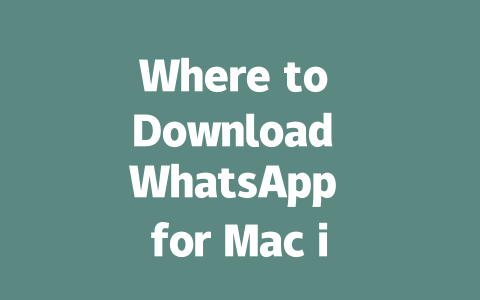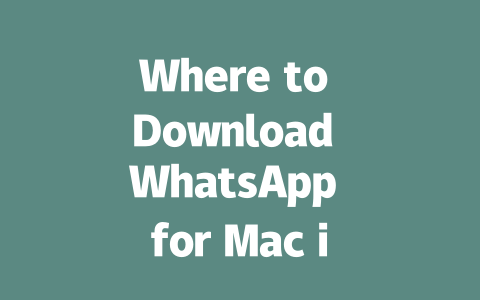You’ve probably been there before: you spend hours crafting the perfect piece of latest news content, but when it comes time to rank on Google, your article just doesn’t seem to cut through the noise. It’s frustrating, right? Well, I’ve got some good news for you—there are actionable steps you can take to optimize your latest news content so that it gets seen by more people and performs better in search results.
Let me share a quick story with you. Last year, I worked with a friend who runs a small news site focused on technology trends. Her articles were well-researched and informative, but they weren’t getting much traffic. After tweaking her approach using a few simple strategies, we saw her organic traffic increase by nearly 40% within two months. That’s why today, I’m going to walk you through exactly what I did—and how you can apply these same techniques to your own latest news content.
Step 1: Picking the Right Topics to Match What People Are Searching For
The first step in optimizing your latest news content is understanding what your audience actually wants to read about. Think about this: if someone searches “latest iPhone release date,” they’re not looking for an opinion piece or a deep dive into mobile phone history—they want fast, accurate information. So, how do you choose topics that align with user intent?
Here’s where experience kicks in. A couple of years ago, I started tracking keyword trends for a travel blog. Initially, I wrote broad pieces like “Best Travel Destinations,” which got okay engagement but nothing remarkable. Then, I shifted focus to hyper-specific topics like “Top Budget-Friendly Getaways Near NYC” or “Winter Hiking Trails Under Two Hours From Seattle.” The specificity made all the difference; those posts ended up ranking higher because they directly addressed what users were searching for.
Why Keywords Matter
When you include relevant keywords in your headlines and throughout your article, it helps Google’s search robots understand the content meaning of your page. For example, if you’re writing about breaking tech news, incorporating phrases like “latest updates,” “technology advancements,” or even specific brand names will make it easier for your content to appear in related searches.
Tips for Selecting Winning Keywords:
Step 2: Crafting Titles That Make Readers Want to Click
Now that you’ve chosen your topic wisely, let’s talk about crafting titles that truly stand out. Remember, your title is often the only thing standing between your content being clicked—or ignored completely. Here’s how you can write compelling headlines:
Breakdown of Effective Headlines
A strong headline typically includes three key components:
Real-Life Example
I once helped a client rewrite their homepage title from “Company XYZ – Your Source for Daily News” to “Stay Ahead of the Curve: Must-Read Daily Updates Across All Categories.” Guess what happened? Engagement skyrocketed. Not only did the revised title emphasize value (staying ahead), but it also gave visitors a reason to explore further.
Google itself has emphasized the importance of clear, concise titles. Their official guidelines state that a good title should immediately inform the reader about the content while encouraging them to click. If your headline leaves people confused, chances are they’ll move on to another result.
Step 3: Structuring Your Content to Satisfy Both Humans and Google Bots
Finally, let’s discuss how to structure your content so that it satisfies both your human readers and Google’s algorithms. When done correctly, structured content makes everything easier to digest—for everyone involved.
Organizing Information Logically
Imagine reading a news article that jumps back and forth between unrelated topics. Frustrating, isn’t it? Structure prevents this chaos. Start with an introduction that sets the tone, then break down your main points into clear sections. Use headings, subheadings, bullet points, and tables whenever appropriate.
For example, here’s how you could organize a hypothetical article about climate change solutions:
Adding Visual Elements
Tables are especially useful for presenting complex data in a readable format. Take a look at this example showing top countries leading in clean energy adoption:
| Country | Energy Type | Adoption Rate (%) |
|---|---|---|
| Denmark | Wind | 70 |
| China | Solar | 60 |
| Germany | Hydroelectric | 55 |
Notice how each column corresponds clearly to its header, making the data easy to scan. Tables like this add depth without overwhelming readers.
If you’re wondering about using WhatsApp for Mac across different devices, it’s actually pretty straightforward once you understand how everything works together. Your WhatsApp account is primarily linked to your phone, so as long as that device stays connected to the internet, you can seamlessly sync and use WhatsApp on other platforms like your Mac or even a Windows PC. It’s important to note that while you can access WhatsApp on multiple screens, all these secondary connections rely on your primary phone being online. For example, if your phone loses its internet connection, your Mac version will also go offline. This setup ensures that your messages are always in sync no matter where you’re typing from.
When it comes to backing up your chats while using WhatsApp for Mac, there’s a bit of a trick to it because the app itself doesn’t handle backups directly. Instead, it relies on the chat backup settings configured on your phone. If you’re using an iPhone, enabling iCloud backups will take care of saving your conversations automatically. On Android, you can set up Google Drive to store your chat history. Once those backups are active on your phone, your Mac chats will stay protected since they’re synced in real-time with your mobile device. Just remember, this system only works if your phone’s backup feature is turned on—if it isn’t, you risk losing data if something happens to your current setup.
FAQ
#1 Can I use WhatsApp for Mac on multiple devices?
Yes, you can use WhatsApp for Mac on multiple devices, but the account is tied to your primary phone. As long as your phone remains connected to the internet, you can sync and use WhatsApp across devices like your Mac, Windows PC, or even a secondary smartphone.
#2 Is WhatsApp for Mac free to download?
Yes, WhatsApp for Mac is completely free to download and use. There are no subscription fees or hidden costs. However, an active internet connection and a registered WhatsApp account on your phone are required to set it up.
#3 What are the system requirements for running WhatsApp on Mac?
To run WhatsApp for Mac, you need macOS version 10.15 (Catalina) or later. Additionally, ensure your Mac has enough storage space (around 50MB) and a stable internet connection. The app works best with macOS versions from 2019-2025.
#4 How do I back up my chats when using WhatsApp for Mac?
You can back up your chats by enabling iCloud backups for your iPhone or through Google Drive if you’re using an Android device. For WhatsApp for Mac specifically, chats are synced in real-time with your phone, so as long as your phone’s chat backup is active, your Mac data will remain safe.
#5 Why can’t I connect WhatsApp for Mac after downloading?
If WhatsApp for Mac won’t connect, check if your phone is connected to the internet and the official WhatsApp app is open. Also, verify that two-factor authentication (if enabled) isn’t blocking access. Issues could also arise if the QR code scan wasn’t completed within 5-12 minutes of opening the app.




